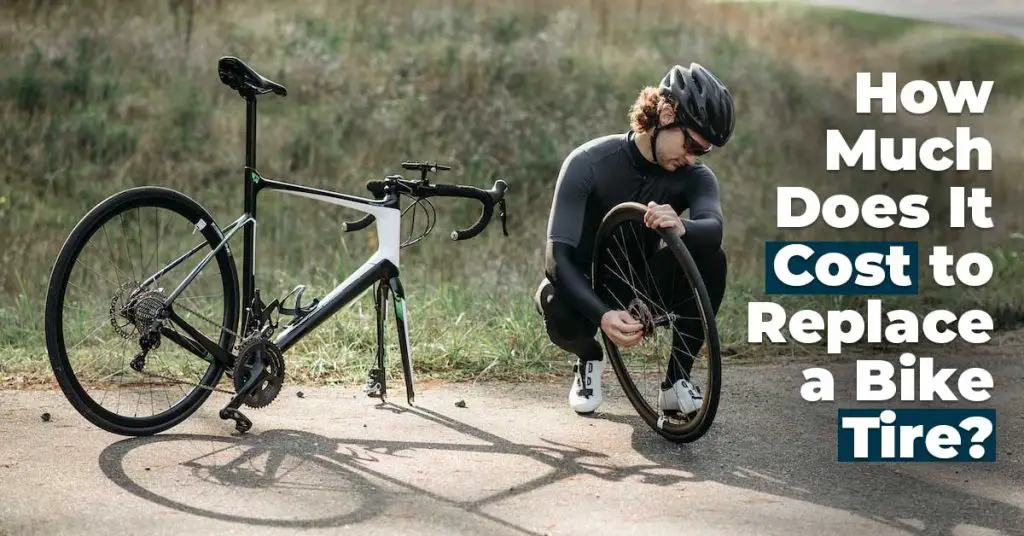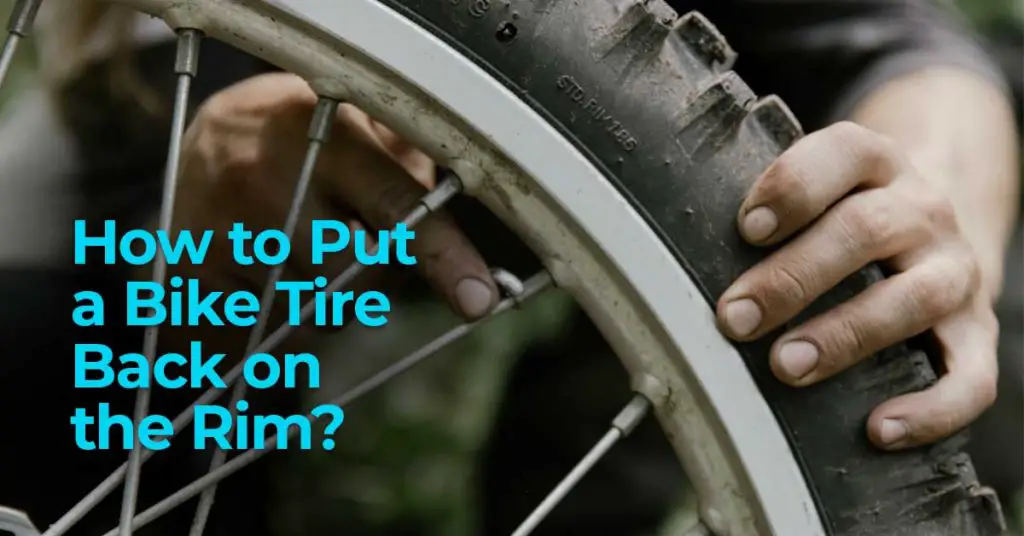Table of Contents
Choosing the right bike tires is the same thing as choosing your favorite type of ice cream. But yes! It should certainly be made sure that we have the right kind of rubber and size for all the types of bikes.
What comes to your mind when you first think about changing your bike tires? The key to selecting the right bike tires is to match the tire to the type of bicycle’s model and its riding style. Bike tires range from bumpy, rough downhill mountain bike tires to slick, smooth road bike tires.
Bike tires are one of the most important parts of a bike, and they can last for years. However, they can also go flat – and if they do, they need to be replaced as soon as possible.
The cost of replacing a bike tire varies depending on the brand and type of bike tire you need. Usually, bike tires cost from $17 to $150.
So, let’s see, how a bike tire is chosen and how much does it cost to replace a bike tire?
How much does it cost to replace a bike tire?
Now when we talk about changing or replacing the bike tire, we must keep in mind the different sizes and types of tires depending on their functions.
Normally, the cost range of a small inflatable tire is between $10- $30, while that of a regular-sized bike tire costs between $25- $100.

Are there any different bike tires – What are they?
Well, there are different kinds of bike tires available on market. There are various types of tires available, including narrow street racing slicks and massive monster truck fat bike tires. It all depends on their specifications.
Usually, the tires are classified into several categories – based on the type of riding. The most common and highly purchased types of bike tires are:
- Road bike tires
- Commuter bike tires
- Gravel bike tires and
- Mountain bike tires
Road bike tires:
They are the kings of road surface and have super-soft tires which run as smoothly and efficiently as a used car salesman. Because of the stability of road surfaces and the preference for efficient performance, these tires can be skinnier and smoother, allowing them to roll faster. Typically, the sizes of these tires range from:
- 18c (or mm) to 32c and are run at high pressures ranging from 80 to 120 psi for best results.
Road bike tires must be compact and narrow. As they are typically used on motorways and smooth surfaces like asphalt, so they do not require additional features for durability and are pretty less expensive.
- Road bike tires usually cost $25.
Commuter bike tires:
The word commuter means “fairly balanced” or “pretty flexible”, which means that the tires of this bike are going to provide a balanced and fair ride to the riders on all surfaces and make it environmentally friendly. This means that these bike tires are not only suitable for a simple and quick super-market trip but also for someone who wants to blast through a bumpy neighbor’s lawn.
Often these commuter-specific wheels are:
- Comparatively sleek for efficiency,
- But also consist of wider widths for adding volume and ease on the rough and cracked roads.
- Commuter bike tires also have the feature of puncture protection, so that a rider can easily get to their desired destination right on time.
- The cost range of tires that fit into commuting bikes is between $30 – $40
Gravel bike tires:
These tires can be considered a cross between road and mountain bike tires. They have an excellent grip and hence can be a great option for commuters who are looking for a bit more traction.
These bike tires frequently have lesser tread patterns in the middle of the tire to reduce rolling resistance and more combative knobs on the exterior of the tire to improve handling and momentum through turns.
- The gravel bike tires usually cost around $50.
Mountain bike tires:
Because of the wide range of conditions, they fall into the most diverse type of bike tires. Mountain bike riders usually bike through the areas of:
- Heavy dirt
- Big rocks
- Sandy clay
- Puddles etc
Hence different knob patterns are required in its tires. The mountain bike tires are generally much broader than other kinds of bike tires, with the increased volume providing maximum grip and a more comfortable ride. They are designed such that the air in them can be considered an additional shock absorber. Since the MTB is mainly used for adventure purposes, hence its tires must be more durable.
- The MTB tires are found in the price range of $80 to $150.
How to choose good bike tires?
When you buy a bike, it’s important to make sure you get the right size of tires. It’s also important to make sure the tires are in good condition and fit your bike properly. Here are some tips on how to choose good bike tires:
Bike type
Before replacing bike tires always consider what type of riding you’ll be doing. Mountain biking will require different tires than road biking. Road biking will require different tires than commuting or recreational cycling.
Type of riding
Consider the terrain you’ll be riding on. If you’re going to be riding on smooth surfaces, like pavement or a trail, choose a tire with a smooth tread design. For rougher terrain, such as gravel or dirt roads, choose a tire with more pronounced treads. The more pronounced the treads are, the better grip they’ll have on that type of terrain.
Weight of bike
Finally, consider your weight and size when choosing your tire size. A standard bike tire is usually designed for bikes that weigh between 350 and 700 pounds; for most people, this falls within the weight range for bicycles too (between 50 and 250 pounds). If in doubt about what size to get, go with the larger size – they’ll wear longer and be less likely to blow out.
Some essential items you’ll need to purchase to replace a bike tire
- Tire levers/wrench -These are used to remove the old wheel and nuts from the new wheel.
- New wheel – This will need to be compatible with your bike’s hub, width (in inches), and bearing type. Be sure to get a quality wheel that won’t require repairs down the road.
- Patch kit – This includes patch adhesive, sandpaper, and rust remover.
- Spare tube – This will come in handy if your new tube doesn’t fit right away.
- Lug wrench – Used for removing lugs from the new wheel.
- New bike tire – This will need to be the same size as your old tire.
- Paint or sealant – Used to cover the exposed metal on the new wheel.
- Tape measure – Used to measure the circumference of the new wheel.
Also, read
How much does it cost to fix bike brakes?
Conclusion:
Hence from the above discussion, we can conclude that the bicycle tire is an important component that can affect the performance of a person’s bike. Therefore, one must be very careful while selecting the best and most appropriate tire for their bicycle.
We have discussed in detail different types of bike tires and their cost; I am pretty much sure you will select the right tire for your bike.




